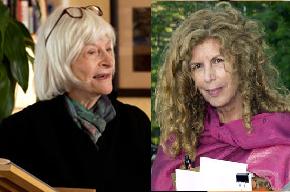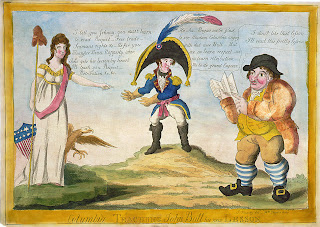
Governor Cuomo has announced the appointments of Marie Howe to serve as the 10th New York State Poet and Alison Lurie as the 10th New York State Author. Howe and Lurie will serve from 2012 to 2014.
“Marie and Alison represent the rich talent and diversity that New York has to offer,” Governor Cuomo said. “Both of them have inspired New Yorkers all across the state, and their works are major assets to us all. They are truly deserving of this honor, and hopefully their great work will now reach a new and even wider audience.”
Donald Faulkner, Director of the NYS Writers Institute, and ex-officio chair of the review committee for the Walt Whitman Award for State Poet of New York, said, “Seldom have I encountered a poet with such a sense of honesty, intimacy, and candor in her work. Marie Howe writes with refreshing openness about love, loss, and redemption. Hers is a voice that will continue to grow in its magic and sheer bravery.”
William Kennedy, Executive Director of the NYS Writers Institute, and ex-officio chair of the review committee for the Edith Wharton Award for State Author of the State of New York, said, “Alison Lurie is a wise and masterful teller of tales that often center on marital strife, domestic disorder, and academic absurdity–comedies of manners of our time but with a deeply human strain. She is a superior prose stylist with a wickedly satirical talent.”
About Marie Howe, New York’s 10th State Poet:
Marie Howe succeeds Jean Valentine as NYS Poet and joins a long line of distinguished poets who have served in the position, including Billy Collins, John Ashbery, Sharon Olds, Jane Cooper, Richard Howard, Audre Lorde, Robert Creeley, and Stanley Kunitz.
Marie Howe said, “I’m honored, surprised, and delighted by this news. New York State has been my life long home: the rivers, the ocean, the maples, the old dismantled elms …- I’ve grown up in love with the voices that have been singing from this land: the gorgeous din: the poets who have spoken and the poets to come.”
Marie Howe is the author of three books of poetry and is co-editor of a highly-praised anthology of writing on AIDS. Her poetry is widely admired for seeking answers to metaphysical questions in ordinary day-to-day experience. In Howe’s work, little incidents and inconsequential memories help to shed light on the nature of the soul and self, life and death, love and pain, sin and virtue.
Howe’s first collection, The Good Thief (1988) was selected by Margaret Atwood for the National Poetry Series. In making her selection Atwood described the poems in the volume as “intensely felt, sparely expressed, and difficult to forget- poems of obsession that transcend their own dark roots.” Howe’s second book, What the Living Do (1997), is an elegy to her brother who died of AIDS. Publishers Weekly named it one of the five best poetry collections of 1997. Howe’s third collection, The Kingdom of Ordinary Time (2008) was a finalist for the Los Angeles Times Book Prize.
In 1994 Howe published an anthology (coedited with Michael Klein) In the Company of My Solitude: American Writing from the AIDS Pandemic, which presents a wide range of voices speaking out on the impact of the disease.
Born in Rochester, Howe worked as a reporter for a Rochester newspaper and taught high school English before taking up poetry as a serious pursuit at the age of thirty. She is a member of the writing faculty at Sarah Lawrence College. She is the recipient of the Lavan Younger Poets Prize of the American Academy of Poets as selected by poet Stanley Kunitz in 1988, and National Endowment for the Arts and Guggenheim fellowships.
Of her work, Stanley Kunitz, the first named State Poet of the State of New York, wrote, “Marie Howe’s poetry is luminous, intense, and eloquent, rooted in an abundant inner life. Her long, deep-breathing lines address the mysteries of flesh and spirit, in terms accessible only to a woman who is very much of our time and yet still in touch with the sacred.”
The advisory panel that recommended Howe as state poet included poets Sydney Lea (Poet Laureate of the state of Vermont), poet Mark Doty, former state poet Jean Valentine, and poet and Writers Institute Director, Donald Faulkner.
For more information on Marie Howe, visit www.mariehowe.com
About Alison Lurie, New York’s 10th State Author:
Alison Lurie succeeds Mary Gordon as NYS Author and joins a group of eminent authors who have served in the position, including Russell Banks, Kurt Vonnegut, James Salter, Peter Matthiessen, William Gaddis, Norman Mailer, E. L. Doctorow, and Grace Paley.
Alison Lurie said, “I am delighted and honored by this award from the state where I have spent most of my life, a state that has been the home of so many great writers as well as enthusiastic and dedicated readers.”
Alison Lurie is the author of ten novels, a short story collection, and several children’s books and works on nonfiction. She is widely regarded as the Jane Austen of contemporary American letters for her nuanced understanding and lifelike portrayal of social customs and the relationship between the sexes. Lurie’s witty and satirical novels examine middle class life, particularly of characters from an academic milieu in small college towns. Christopher Lehmann-Haupt declared in the New York Times that Lurie “has quietly but surely established herself as one of this country’s most able and witty novelists.”
Lurie is best known for her novels The War Between the Tates (1974), which was hailed as a classic of its time and place, and Foreign Affairs (1984), which received the Pulitzer Prize. Her other acclaimed novels include Love and Friendship (1962), Real People (1969), The Last Resort (1998) and Truth and Consequences (2005).
A champion of children’s literature, Lurie has also written both children’s books and scholarly nonfiction works examining the importance of children’s literature to global literacy and culture.
Lurie grew up in White Plains, NY and graduated from Radcliffe College. She taught at Cornell University from 1968 until her retirement as the Frederic J. Whiton Professor of American Literature in 1998.
The advisory panel that recommended Lurie as state author included the present laureate, novelist Mary Gordon, novelists Dave Eggers and Lorrie Moore, and novelist and Executive Director of the New York State Writers Institute, William Kennedy.
For more information on Alison Lurie, visit www.alisonlurie.com.
About the State Poet and Author:
The State Poet and Author are selected for two-year terms by the NYS Writers Institute, located at the University at Albany, SUNY. The choice for State Author and Poet is based on a substantial body of work of notable literary merit.
The NYS Writers Institute of the State University of New York, located at the University at Albany, was established as a permanent state-sponsored organization through legislation signed into law in 1984. The Writers Institute provides a milieu for writers, both renowned and aspiring, from all over the world to come together for the purpose of instruction and creative exchange.
In 1985 the governor and state legislature empowered the Institute to award the Edith Wharton Citation of Merit for Fiction Writers (State Author) and the Walt Whitman Citation of Merit for Poets (State Poet) to authors whose career achievements make them deserving of New York State’s highest literary honors.
Upon the recommendation of two advisory panels of distinguished writers convened under the aegis of the Institute, the governor awards the citations every two years to one fiction writer and one poet of distinction. Throughout their two-year terms the state laureates promote and encourage fiction writing and poetry throughout New York by giving public readings and talks within the state. The State Author and Poet are not paid, and there is no cost to the state for the designation.
NYS Poets and their terms of service are listed below.
- Jean Valentine, 2008-2010
- Billy Collins, 2004-2006
- John Ashbery, 2001-2003
- Sharon Olds, 1998-2000
- Jane Cooper, 1995-1997
- Richard Howard, 1993-1995
- Audre Lorde, 1991-1993
- Robert Creeley, 1989-1991
- Stanley Kunitz, 1986-1988
NYS Authors and their terms of service are listed below.
- Mary Gordon, 2008-2010
- Russell Banks, 2004-2008
- Kurt Vonnegut, 2001-2003
- James Salter, 1998-2000
- Peter Matthiessen, 1995-1997
- William Gaddis, 1993-1995
- Norman Mailer, 1991-1993
- E. L. Doctorow, 1989-1991
- Grace Paley, 1986-1988
More information on the NYS Poet and Author and the NYS Writers Institute can be found at http://www.albany.edu/writers-inst/
Photos: Alison Lurie (left) and Marie Howe.








